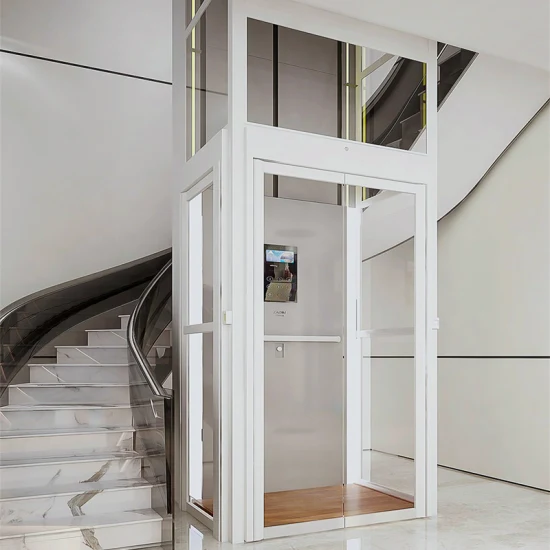Discover the Best Disabled Platform Lifts Prices UK for Residential and Commercial Usage
Discover the Best Disabled Platform Lifts Prices UK for Residential and Commercial Usage
Blog Article
Exploring the Globe of Lifts: Common Concerns Encountered by Numerous Lift Mechanisms
As we browse through the vertical transport systems of modern-day structures, elevators stand out as an important part of our daily lives. From hydraulic elevators to grip systems and machine-room-less layouts, each lift type comes with its set of typical issues.
Hydraulic Elevators
Hydraulic lifts, often chosen for low-rise buildings, use fluid stress to regulate the movement of the elevator auto (lift repair companies). This device involves a hydraulic pump pushing oil into a cyndrical tube, causing the lift to relocate in the preferred direction. While hydraulic lifts are known for their peaceful and smooth procedure, they do come with their very own set of typical problems
One common problem with hydraulic lifts is oil leak. Furthermore, problems with the control system, such as defective valves or a malfunctioning pump, can trigger disruptions in the lift's activity.
Routine maintenance and punctual repairs are necessary to guarantee the smooth functioning of hydraulic lifts. By resolving these typical issues proactively, structure proprietors can reduce downtime and ensure the safety and security and efficiency of their vertical transportation system.
Traction Lifts
When taking into consideration upright transport systems in buildings, an additional typical type besides hydraulic elevators is the traction elevator. Grip elevators run utilizing a system of ropes and counterweights that relocate the elevator car by clutching onto the hoist ropes. This system permits for smoother and quicker vertical transport compared to hydraulic systems.
Among the common concerns faced by grip elevators is rope wear. The constant motion of the ropes within the grip system can cause damage over time, potentially causing the lift to breakdown or end up being unsafe for use. Normal evaluations and upkeep of the ropes are vital to ensure the elevator's correct functioning and security.
An additional issue that traction lifts may come across is associated with the control system. Problems with the control system can cause concerns such as erratic movement, delays in reaction times, or even full shutdowns. Normal screening and maintenance of the control system are important to stop such issues and ensure the lift's dependability.
Machine-Room-Less (MRL) Elevators

Among the key parts of MRL elevators is the portable gearless grip maker that is mounted within the hoistway. This machine successfully drives the elevator automobile without the demand for bulky tools located in standard traction lifts. Additionally, MRL elevators normally utilize a weight system to balance the automobile, more enhancing their power efficiency.
In spite of their advantages, MRL lifts may deal with challenges associated with repair and maintenance as a result of the confined space for tools installation. Availability for servicing components within the shaft can be restricted, needing specialized training for technicians. Proper maintenance routines and regular inspections are critical to make certain the ongoing smooth operation of MRL lifts.
Overloading and Weight Restriction Issues
Are lifts equipped to take care of excess weight tons efficiently and safely? Overwhelming and weight restriction concerns are critical issues in elevator operations. Elevator producers layout lifts with details weight capacities view website to ensure passenger safety and security and devices long life. Going beyond these weight limits can result in different issues, including mechanical failures, delays, and security hazards.
When elevators are overwhelmed, it places too much stress on the electric motor, cables, and other elements, potentially creating malfunctions or breakdowns. Safety systems such as sensing units and overload sensors remain in place to stop elevators from relocating if they discover excess weight. In addition, surpassing weight limits can lead to boosted energy intake and wear and tear on the elevator system.
To minimize overwhelming concerns, developing supervisors should plainly display weight limits in elevators and inform passengers on the relevance of sticking to these restrictions - lift repair companies. Routine upkeep checks by qualified specialists can also help ensure that lifts are running within safe weight parameters. By resolving overloading and weight limitation issues proactively, structure proprietors can boost elevator Recommended Reading security and effectiveness
Electric System Failures
Exceeding weight limitations in elevators can not just cause mechanical concerns but also potentially add to electric system failures within the lift infrastructure. Electrical system failings are a critical problem in elevator procedure, as they can cause unforeseen closures, malfunctions, or also security threats. One typical electric issue is the getting too hot of elements due to excessive existing flow triggered by overwhelming the lift beyond its capability. This can cause harm to the motor, control, or wiring systems, resulting in costly repair work and downtime.
Additionally, power surges or changes in the electric supply can additionally interrupt the elevator's procedure, affecting its efficiency and safety and security. These electrical disruptions can damage sensitive lift components such as control board, motherboard, or sensing units, leading to system failings. Normal upkeep and assessments are crucial to determine and attend to prospective electrical concerns immediately, guaranteeing the secure and effective operation of elevator systems. By sticking to weight restrictions and performing routine electric system checks, structure owners can minimize the risk of electric failings in elevators.
Conclusion

Hydraulic elevators, often chosen for low-rise buildings, utilize fluid stress to control the motion of the lift cars and truck.When thinking about vertical transport systems in buildings, another common kind aside from hydraulic lifts is the grip elevator. Grip elevators operate using a system of ropes and weights that relocate the lift car by grasping onto the hoist ropes. Unlike standard elevators that call for a separate equipment area to house the tools, MRL lifts integrate most of the elements within the shaft, getting rid of the demand for a committed maker room.In conclusion, lifts face typical problems such as hydraulic malfunctions, grip system failings, and electrical system troubles.
Report this page